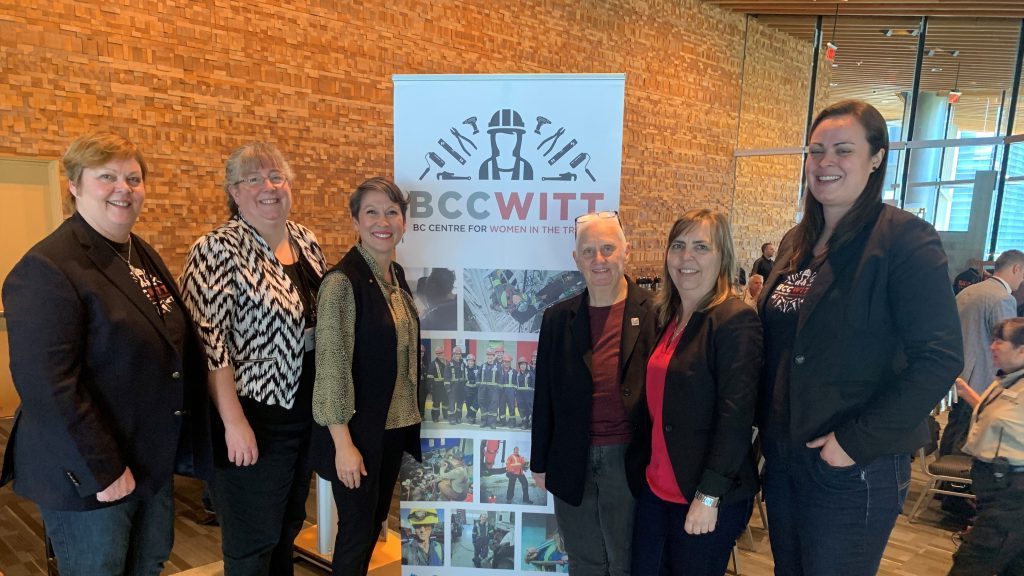Getting women into the trades is important, two American experts say, but more important is keeping them in the industry.
Boston-based Policy Group on Tradeswomen’s Issues (PGTI) research director Susan Moir and New England Regional Council of Carpenters business representative and organizer Elizabeth Skidmore were guests of the Industry Training Authority (ITA) and the BC Centre for Women in Trades Training (BCCWITT) with a presentation titled, Creating Equity Through Industry Collaboration: Best Practices for Recruiting and Retaining Women in Construction.
One of the main points of their presentation was that the “why” aspect of women not being in the trades is less important than the “how” of getting and retaining those women in the industry.
“There have been multiple studies, including one we’ve done and one in British Columbia, that document the reason women aren’t in the trades is because this industry and other industries suffer from institutional gender discrimination,” Moir said. “So, the real question is how can women get in the trades and we’ve done a lot of work in breaking that down and figuring out the best practices to get them in the trades.”
She added in Boston the problem is that there is no existing network between white people with long established roles in the trades and other communities.
“We all bought our houses on the back of these jobs and then we shut the door,” Moir said. “It isn’t a labour shortage, it’s a race and gender problem.”
The best practices advocated for by PGTI to counteract these conditions, Mori said, include putting women first, as they are the most underrepresented group in construction, embedding diversity in operations, employing frequent external monitoring, and maintaining diverse work crews from day one and more importantly keeping them from job to job. All of the best practices are documented in a manual called Finishing the Job.
“There’s nothing in the manual that hasn’t actually been tried and shown to increase diversity,” Moir said.
The PGTI model to get women into the trades and retain them is through integration of supply and demand, Moir said.
“Supply is opening the pipeline to get more women into union apprenticeship and demand keeps those women working in the trades,” Moir said.
While there is a noteworthy push to encourage youth to enter the trades, Moir said, her organization is looking for women who are already employed in jobs that pay less and are less fulfilling.
“The best group is someone who can be on the job at 7 a.m. and follow instruction. We’re really looking for women who are working lousy jobs.”
Skidmore pointed to women working in nursing homes as a prime example of those qualified for work in the trades.
“We need to be talking to women, employed and unemployed, and tell them ‘you could be making five times what you are right now.’ If you’re working in a non-union nursing home, you’re lifting heavier weights than anyone on a construction site. If you’re doing banquet weights you’re probably lifting heavier things (than construction). There’s no reason why women can’t be doing these jobs,” Skidmore said.
She also pointed to those already working in the trades as the best recruiters to bring in more women to the industry.
“If suddenly you get a new car that nobody’s seen in your neighbourhood, everyone wants to know what you’re doing,” Skidmore said.
Moir added part of enacting change is determining what spheres of influence are available to you and acting on them.
“Racism and sexism are hard to surmount, so we say ‘lead from where you are.’ What can you do in your sphere of influence to push these things forward?” Skidmore asked.
Some smaller companies, Moir said, are doing the books at home on a Sunday and “you don’t necessarily have what it takes to make a big change to your organization.”
“We want to provide resources to those companies, who are the nuts and bolts of our construction economy,” she said.











Recent Comments
comments for this post are closed